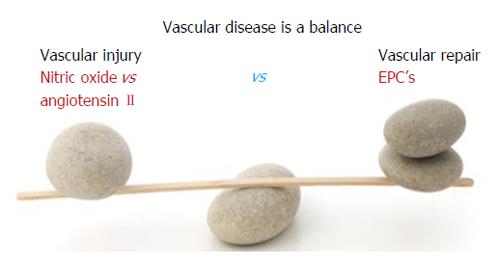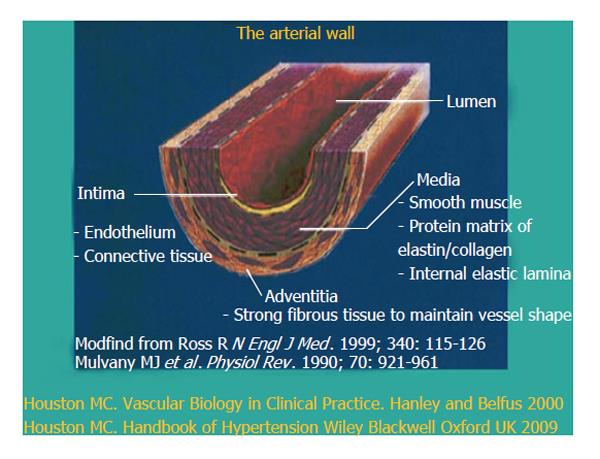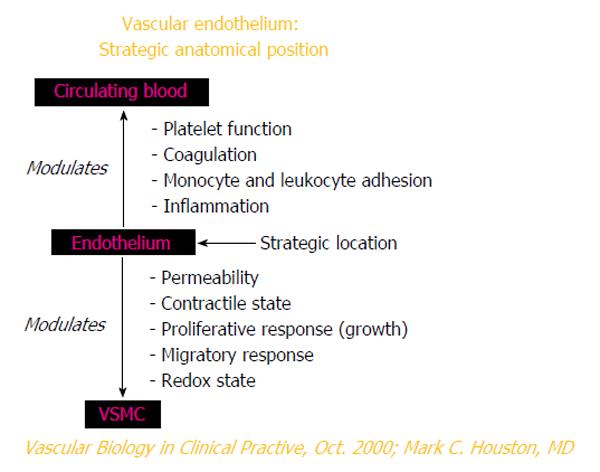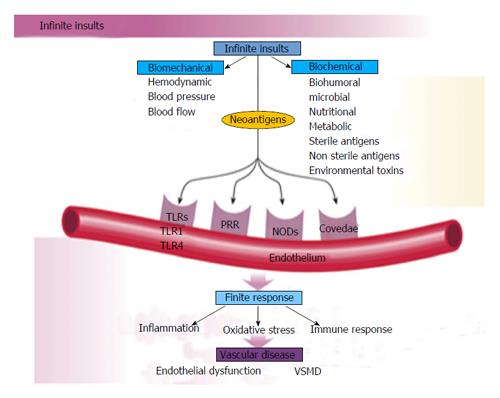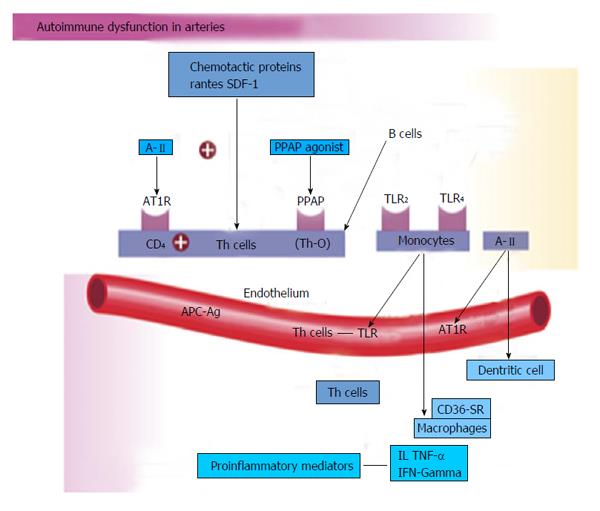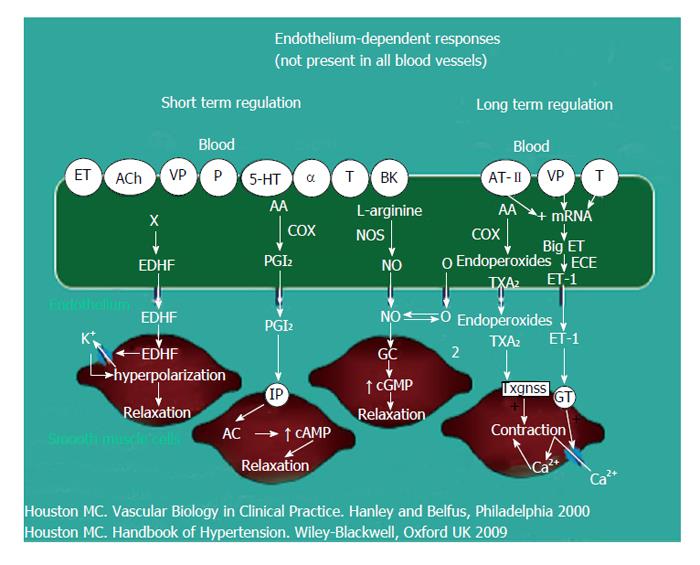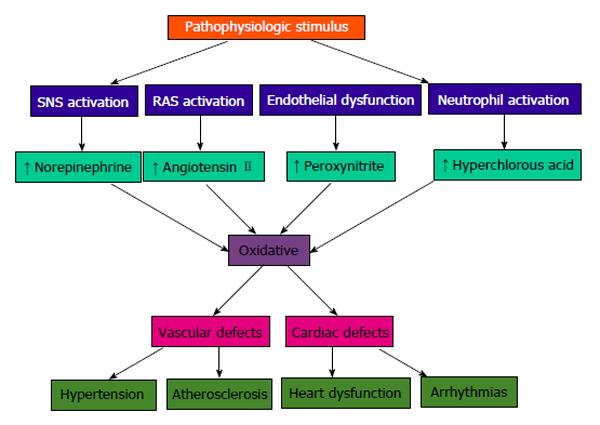Copyright
©2014 Baishideng Publishing Group Co.
Figure 1 Vascular health is a balance of injury and repair.
EPC’s: Endothelial progenitor cells.
Figure 2 The blood vessel structure.
Figure 3 The role of the vascular endothelium to maintain vascular homestasis and health.
VSMC: Vascular smooth muscle cells.
Figure 4 Infinite insults with three finite vascular responses.
Biomechanical insults such as hypertension result in stimulation of pattern recognition receptors and caveolae that induce vascular inflammation, oxidative stress and immune dysfunction endothelial dysfunction and vascular and cardiac smooth muscle dysfunction. TLR: Toll like receptors.
Figure 5 Immune vascular dysfunction.
Stimulation of the angiotensin receptor and toll like receptors and other and direct stimulation of T cells on the endothelium and vascular smooth muscle lead to immune dysfunction, inflammation and oxidative stress. TLR: Toll like receptors; IL: Interleukin; TNF-α: Tumor necrosis factor alpha.
Figure 6 Stimuation of the AT1R increases production of superoxide anion which neutralizes nitric oxide and also forms additional downstream radical oxygen species and radical nitrogen species that increase vascular oxidative stress.
AA: Arachidonic acid; NOS: Nitric oxide synthase.
Figure 7 Neurohormonal and oxidative stress system interaction on cardiac and vascular muscle.
SNS: Sympathetic nervous system; RAS: Renin angiotensin (aldosterone) system.
- Citation: Houston M. The role of nutrition and nutraceutical supplements in the treatment of hypertension. World J Cardiol 2014; 6(2): 38-66
- URL: https://www.wjgnet.com/1949-8462/full/v6/i2/38.htm
- DOI: https://dx.doi.org/10.4330/wjc.v6.i2.38









